18 Stories About What Can Happen If You Decide to Adopt a Kid
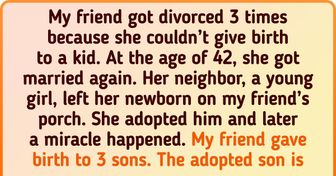
In 10 years from now, you’ll be a completely different person! Well, at least your skeleton will be. To reach its adult size, your skeleton went through a process called modeling, which means the development of growth and formation. Turns out it regenerates completely once every 10 years or so! This entire process ensures you always have healthy bone cells, that can support you and provide calcium to your body.
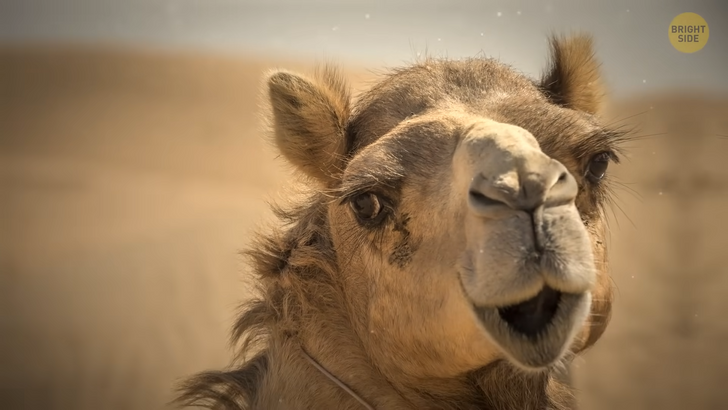
And speaking of ways the body regenerates: every second you make 25 million new cells. I’ll do the math for you: Okay, that means in about 15 seconds, you will have made more cells than there are people in the United States. Think about that next time you feel you haven’t been productive enough.
Some animals have eyes that need to adapt to hot climates. Like camels for example. Their eyes also feature a third eyelid, but these sweep across from the corner of each eye. Because their environment is filled with small particles, they need to clean their eyes more frequently than other species.
Now, see that little pink thing in the corner of your eye? It’s also a third eyelid! Well, a vestige at least. In humans, the third eyelid is unnecessary — because it no longer serves its original purpose.
Next time you’re tuning in to your favorite song, try to pay some attention to your heartbeat. If you listen closely, you’ll notice that sometimes your heartbeat may synchronize with the rhythm of the song. Not all genres of music have this special ability, but some tunes trigger the release of dopamine — or the happy hormone. This effect may give you a lower heart rate, breathing rate, and blood pressure.
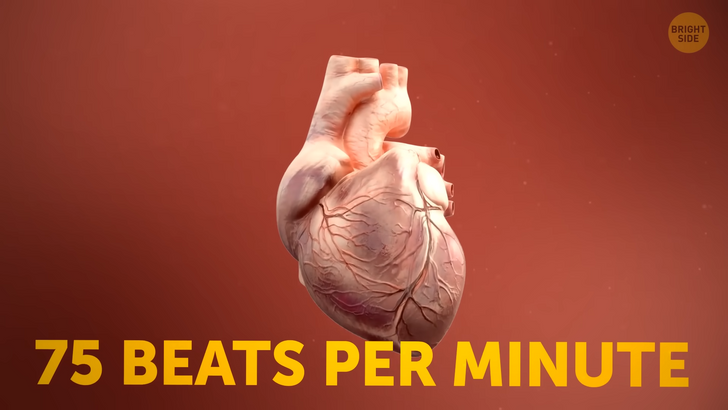
And speaking of that healthy ticker of yours, just in case you’re wondering, it beats on average about 75 times per minute. This means each year, a human heart can pump enough blood to fill an Olympic-sized pool.
What’s even more fascinating is that if you were to connect all your blood vessels end to end, it would be able to circle the Earth 2.5 times! Your heart can also continue to beat even if it’s removed from the body. That’s because it has its own internal “battery” which allows it to beat, as long as it receives oxygen.
If you regularly have your nails done at a salon, you’ve probably noticed you need more appointments for your fingers than your toes. That’s because fingernails do grow faster. The definitive scientific answer is still up for debate, but many specialists think it’s because fingernails used to be claws, somewhere back in our ancient history. These days they’re flatter and have widened a bit, and it all happened when primates started using tools in their day-to-day lives, like stones and branches. So, there was less use for claws. Once they got flatter, it meant nails wouldn’t have gotten in the way if primates wanted to use the palms of their hands.
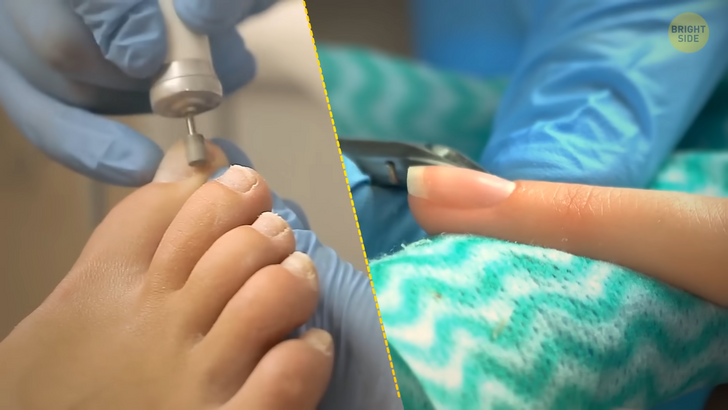
As for why fingernails grow faster than toenails, the short answer may be the fact that we use our hands more than your feet. As such, our fingernails are more exposed, and we may have evolved to grow them faster. The more you use a certain part of your body, the more it becomes exposed to damage.
Getting back to our hands, it’s about time we give a nice shoutout to our humble pinkies. We don’t see them as being really that important, since we don’t use them for holding objects, eating, or writing. But recent studies have shown that losing the pinky on our dominant hands would have a devastating effect. Specialists haven’t gathered enough data to supply specific numbers, but from what they’ve learned so far, losing our pinky would weaken our grip strength considerably, even if it’s the lesser used finger. Adding the ring finger to that, and the effect would be worse for our grip strength.
Another recent survey done in the UK has shown that only about 40% of people are happy with how their nose looks. Regardless of how you feel about it, the human nose is a real-life superhero. That’s because it acts as a heater, filter, and humidifier all at once. Inside each nostril, there are small shelf-like bones that feature blood vessels. They heat the air up before it reaches other parts of our respiratory system. The mucus that’s inside there handles making the air more humid. As for the filtering part, that’s why we have nose hairs. Small particles get stuck on these small hairs, which helps prevent pollen, spores, viruses, or bacteria from reaching our lungs.
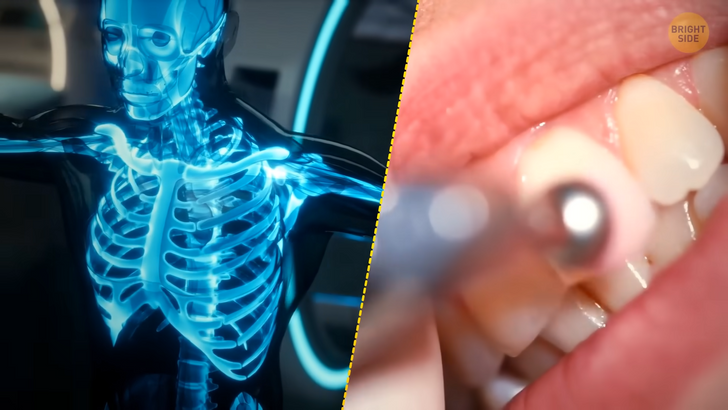
Now, when watching cartoons, we’re led to believe that the sound our heart makes is because it’s touching its environment when beating. Well, it turns out that sound is actually made by the opening and closing of the heart valves. They are like small doors inside our hearts that open and close to pump blood correctly from one side of the heart to the other. For our bodies to work, blood needs to move at the right time and in the right direction. Or else.
Let’s talk teeth. Throughout your entire life, you’ll probably spend up to 40 days total just brushing your teeth! And in case you’re still wondering, teeth are not in fact bones, even if they do have a lot in common. One of the primary differences between bones and teeth is that our bones can regenerate, they are living tissue. Our teeth are not, and they remain permanently damaged once broken. Here’s another shocker!
We are the only species on this planet to have a chin. There’s still some debate around this subject in the scientific community, but one of the reasons why seems to be to make our jaws stronger. As humans have continued to evolve, their teeth and the muscles in their jaws got smaller and smaller. So, they needed something to help with increased jaw resistance.

Most of us have developed some specific traits depending on the area of the globe in which we live. But there is a group of people — specifically those that live in higher altitudes — that developed some pretty cool traits. That’s because high-altitude environments come with less oxygen. Not only do these people survive in these locations, but they’ve adapted so well that they actually thrive. In the Andes Mountains of South America, people have evolved red blood cells that can carry much more oxygen. It makes their overall circulatory system much more efficient. People living in Tibet have to endure similar conditions, but surprisingly, they have adapted differently. In Tibet, they can take more breaths, so that they can properly oxygenate their bodies.
You’ve probably heard the myth about dreams only lasting a couple of seconds in reality. Turns out that yes, some of them do, but not all dreams are the same. There are a lot of things we don’t understand yet about how we dream. What we do know is that they mainly happen during the rapid eye movement — or REM — stage of sleep. During this time, your brain is more active, about as active as it is when you’re awake. And it’s named REM because, during this sleep stage, your eyes tend to move a lot. Dreams can happen during other stages of sleep too, but you’re less likely to remember them. As for the length of each dream, they can go from a few seconds to even 20–30 minutes! Also, you’re more likely to remember a dream if you’ve woken during the REM stage. Most people have three to five dreams per night, but some people can have up to seven. I know, seems unlikely, but remember: you immediately forget most of what you dream.
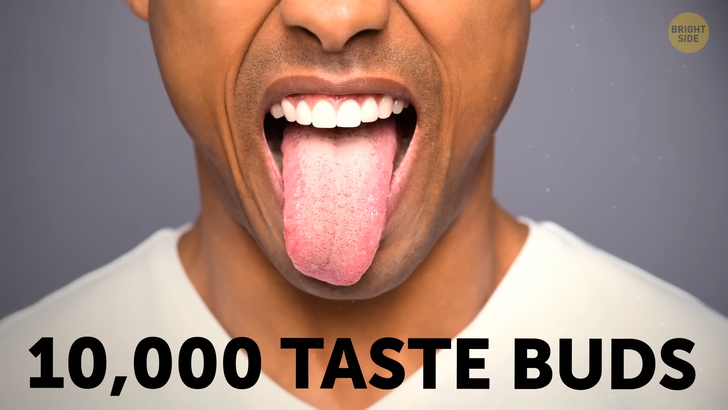
Just like we have unique fingerprints, we also develop unique tongue prints! Research has shown that those approximately ten thousand taste buds on our tongues are laid out in a one-of-a-kind pattern. Truth is about 80 percent of what you believe is taste is actually smell. That combination of taste and smell that we perceive is what we come to know as flavor. That’s probably because our sense of smell is around 10,000 times more sensitive than our sense of taste.
Our mouths also have another cool superpower called mouthfeel. With the help of the somatosensory system, it allows us to sense the texture of our food. The system is activated by physical touches, such as pressure, touch, or vibrations. It’s even sensitive to pain and temperature. We also use our tongues to identify the size, form, and texture of food, which is crucial for proper chewing and digestion. Tongues are also good for wagging, sticking out at certain people, and trumpet playing.











